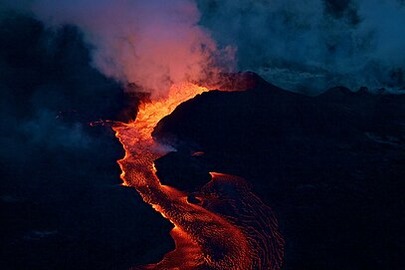usgs.gov
Volcano Updates
HAWAIIAN VOLCANO OBSERVATORY DAILY UPDATE U.S. Geological Survey Sunday, January 5, 2025, 8:46 AM HST (Sunday, January 5, 2025, 18:46 UTC) KILAUEA (VNUM #332010) 19°25'16" N 155°17'13" W, Summit Elevation 4091 ft (1247 m)
Monitoring Data
Above: The blue line shows the radial tilt at station UWD near Uēkahuna, on the western rim of Kīlauea's summit caldera.The green line is a radial tilt at station POC on the north rim of Pu'u'ō'ō cone on the middle East Rift Zone of Kīlauea. These are recorded by continuously operating electronic tiltmeters.
Multimedia
Pieces of lava (called tephra because they travel through the air before being deposited on the ground) blanket the crater rim downwind of the erupting vents in Kīlauea summit caldera (Kaluapele).
Webcams
Webcams show current conditions on Kīlauea Volcano. Direct links to all individual Kīlauea webcams. Kīlauea volcano, Summit
Maps
This thermal map shows lava flows covering the floor of Halemaʻumaʻu crater at the summit of Kīlauea. Fountaining was active in the southwest portion of the caldera, with flows extending east onto the downdropped block.
Photos & Videos
The Kīlauea Photo and Video Chronology provides visual updates of eruptive activity, field work, and more.
